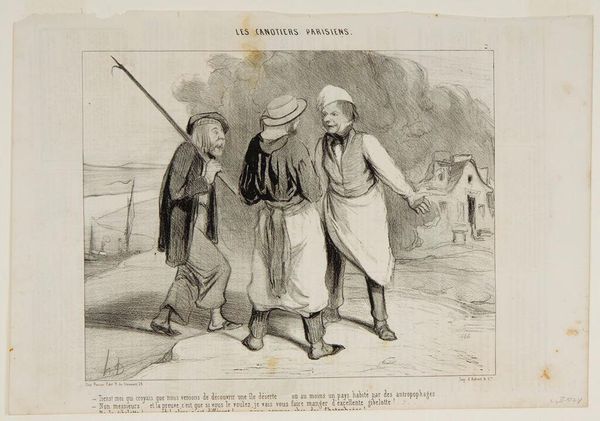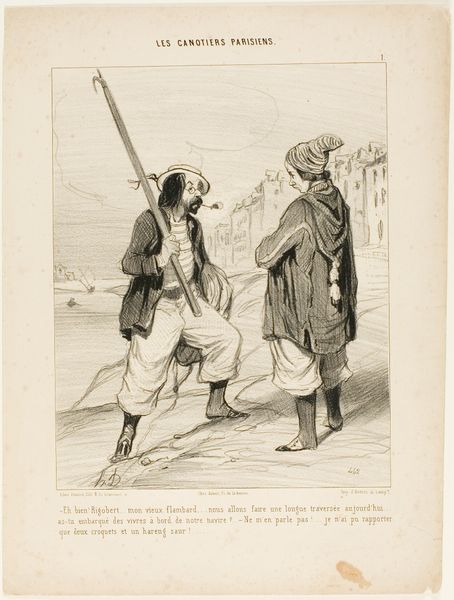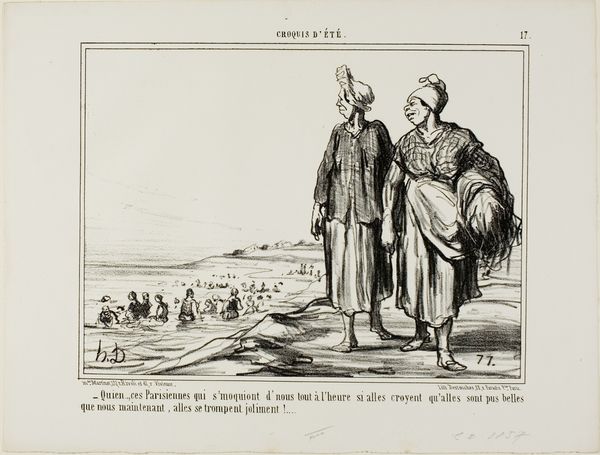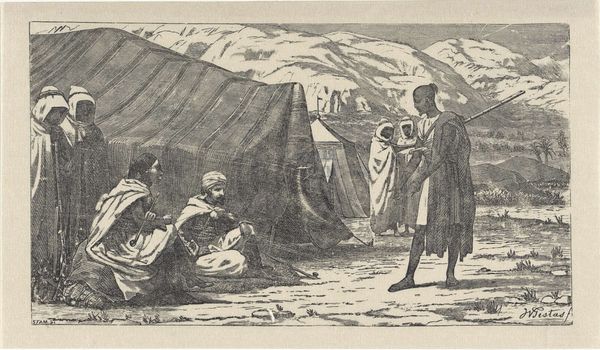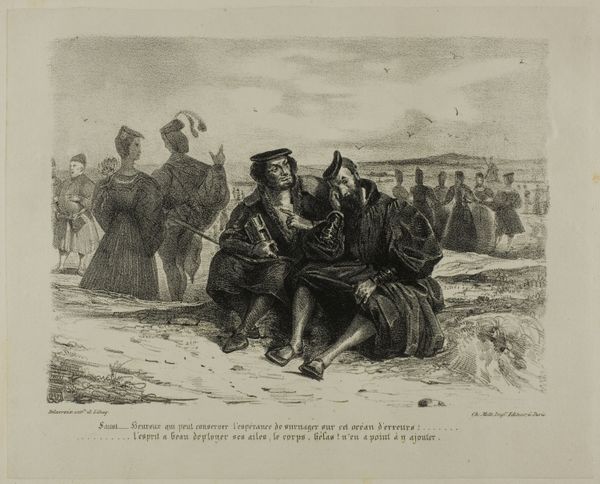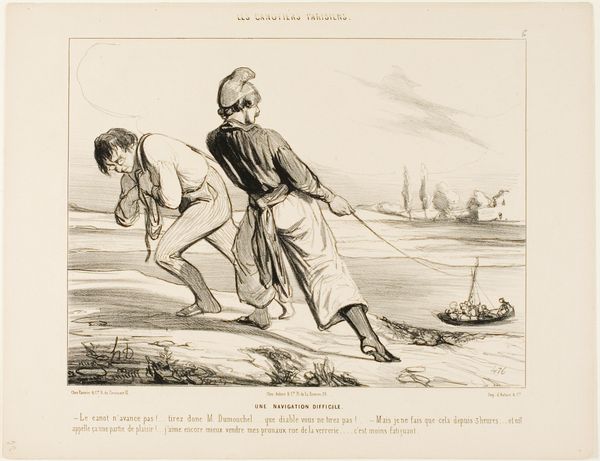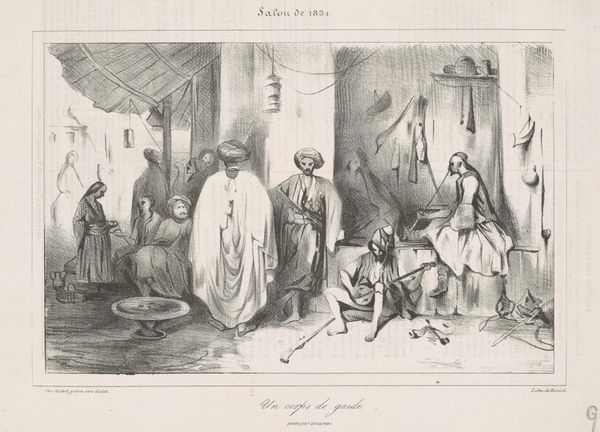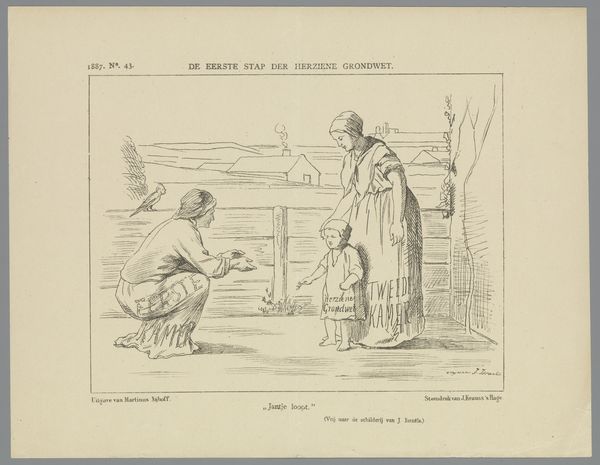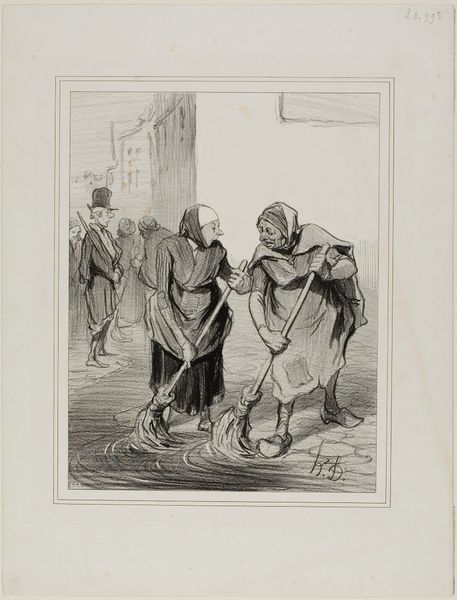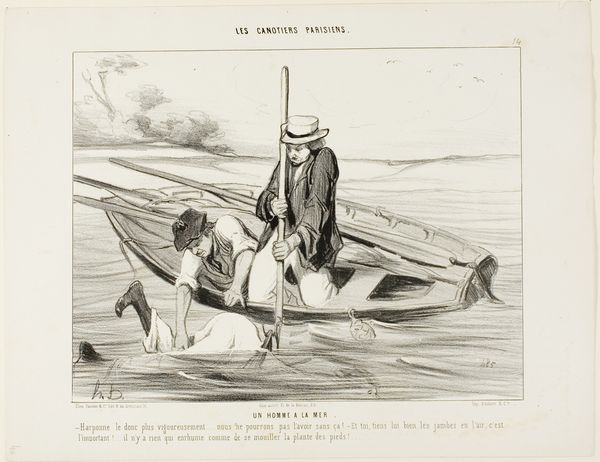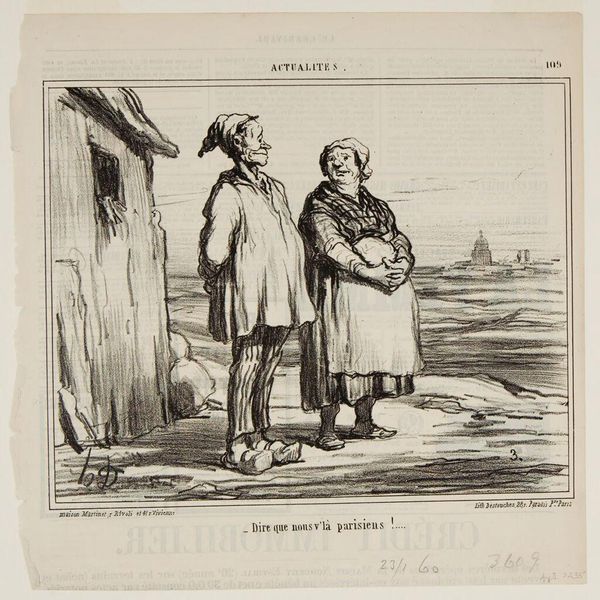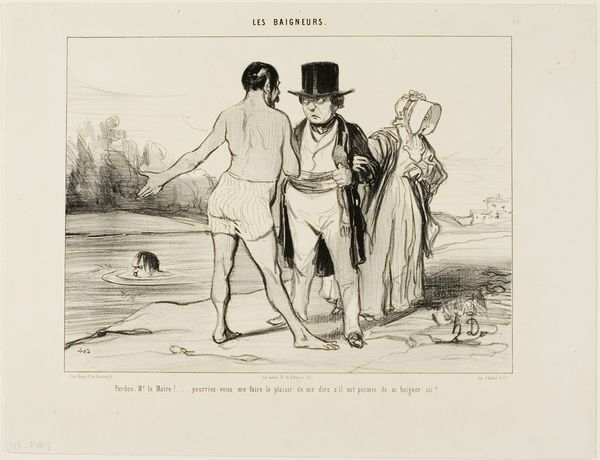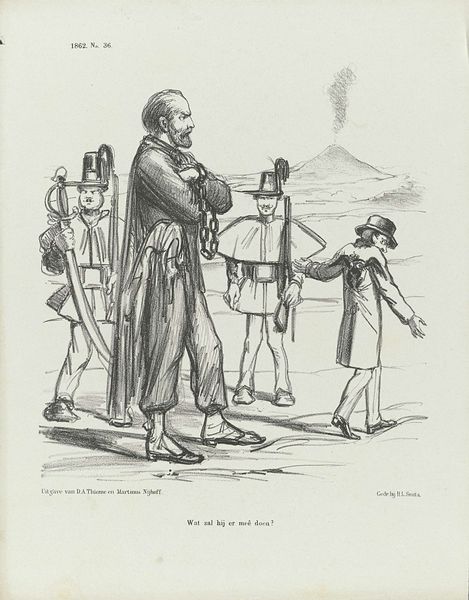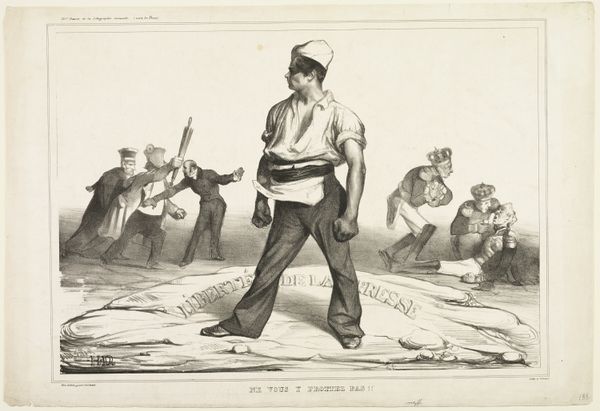
“- Well, fancy that! I thought that we had just discovered a deserted island or at least a country inhabited by cannibals. - No, Sir.... and the proof is that, if you want, I am going to make you eat an excellent fricassee of game in a white wine sauce. - A fricassee of game ....oh, then it's different..... we are with the Chatophages. (note:cat-eaters),” plate 2 from Les Canotiers Parisiens 1843
0:00
0:00
Dimensions: 205 × 257 mm (image); 263 × 341 mm (sheet)
Copyright: Public Domain
Curator: This lithograph is plate two from Honoré Daumier's series, "Les Canotiers Parisiens," created in 1843. Editor: My immediate impression is one of bemused skepticism. The stark contrast of light and shadow creates an almost theatrical feel, doesn’t it? The figures seem poised on a stage. Curator: Indeed. Daumier masterfully uses the lithographic crayon to delineate form and texture. The linear quality, combined with areas of tonal wash, guides the eye across the composition. Editor: And those exaggerated features! We see the chef with his welcoming gesture, an implicit allusion to the grotesque theme of cannibalism, or, rather, “cat-eating,” as suggested in the satirical subtitle. It evokes classic themes of deception and false hospitality, something out of Greek mythology, perhaps? Curator: Certainly. But on closer inspection, one might argue that the true subject of the work is the dynamic relationship between form and content. Daumier expertly contrasts the solidity of the figures with the almost abstract rendering of the landscape. Note the subtle gradations in tone that add depth. Editor: It’s intriguing how he uses this exaggeration. The fisherman on the left, his shocked expression and primitive spear juxtaposed with the promise of ‘fricassee,’ creates this humorous tension, hinting at societal commentary—a critique of class and culinary culture, perhaps. Curator: I agree it functions as societal critique. Moreover, consider the work purely in terms of line and volume; Daumier uses curvilinear forms for the landscape and geometric shapes for the architecture. The subtle opposition of the forms is an excellent compositional device. Editor: It highlights a very dark kind of joke, using archetypal imagery to convey this story—the traveler arriving in an unknown land, unaware of the true intentions of his hosts. It touches on primal fears and the blurring of civilized and savage behaviors, even within Parisian society. Curator: True, the composition encourages that reading, yet one may see in the simplified planes of tone and structured linearity a movement away from academic standards and toward modern art aesthetics. Editor: Ultimately, the lasting impression is that Daumier's image persists through its layering of visual metaphor and stark humor. Curator: Indeed. The interplay of light, form, and tonal composition creates an intriguing tableau, even beyond its overt narrative elements.
Comments
No comments
Be the first to comment and join the conversation on the ultimate creative platform.
